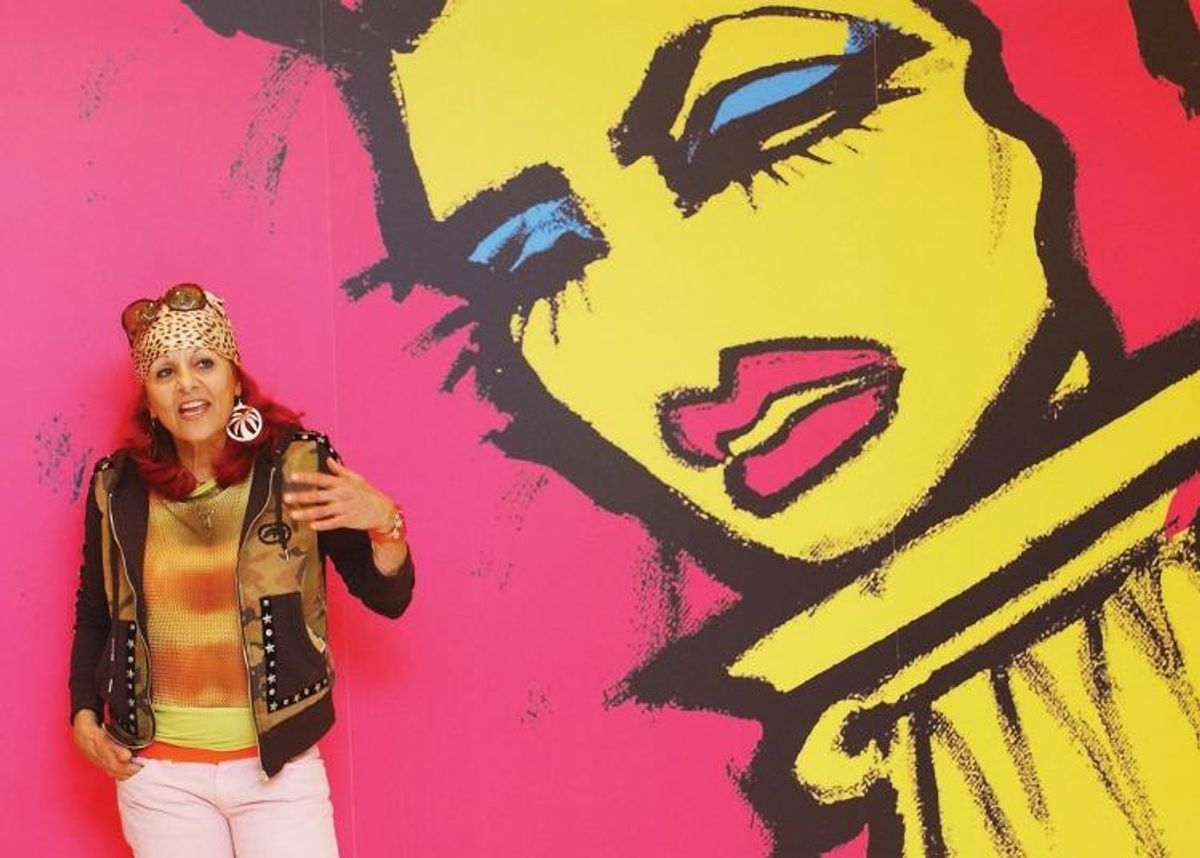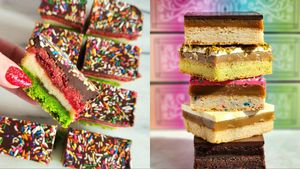Patricia Field's name has become synonymous with an entire generation of style. Her work has fueled the creative minds of numerous leaders in the fashion industry. At 75, Field has left a legacy to last lifetimes, and her work is still not done.
If you live in New York, you've likely visited her boutique in the Bowery, which has served as a fixture for the fashionistas of the city. Field also designed the wardrobes for Sex and the City and The Devil Wears Prada, and received an Oscar nomination for the latter.
As The Devil Wears Pradacelebrates its 10th anniversary (now available on Blu-Ray & DVD), and Field waves goodbye to her boutique after 50 years on the New York shopping scene, we meet with the designer to reflect on the many styles she's created.
Out: It's been 10 years since The Devil Wears Prada came out. Would you say cerulean blue is making a comeback?
Patricia Field: I would hope so, but I can't really say for sure. The Devil Wears Prada was really brilliant in many ways. Of course, number one is Meryl Streep and her dialogue. But I'm not really sure if cerulean ever had a moment even outside of The Devil Wears Prada.
Looking back, what was it like to have such a huge creative role in a movie that people still draw inspiration from?
My main motivation looking back was the opportunity to work with Meryl Streep, who I never had worked with before. And as I hold so much respect for her as an actress, I jumped at the opportunity. I do my very best to enjoy and have fun with the participants, the director, the actors. And when that element of fun and enjoyment and optimism is there, your chances of producing something memorable grow and that's very important... I've had many experiences where different production companies and studios wanted to capitalize on the Sex and the City trend. But at the end of the day, they were copies. In the case of The Devil Wears Prada, this was an original. When you start with an original concept, that's the best place to be, and you develop it. A copy of a trend doesn't have the impact in my experience.
Do you have a favorite look from the movie?
I have a couple of favorites. Of course, the transition of Annie when she walks out in that Chanel outfit with the thigh-high boots, because it had a strong meaning in the storyline. She started out as a girl with a cerulean crewneck sweater from who-knows-where, and as she progresses, she steps into her shoes of a fashion career.
Do you find dressing the less-fashionable characters just as fun as dressing the more stylish ones, like Anne Hathaway before she had her makeover?
It's part of the storytelling and you have to find that balance and the believability factor. Because when the audience looks at it and it doesn't click, the game is lost. From that point of view, there's a certain challenge but it's something that's very important within the whole storyline. So yea, to me it's just as fun from that point of view.

When you're designing a wardrobe for a character that's based on a real person, like the Miranda Priestly character, do you pull qualities from their style?
Oh no, absolutely not. First of all, the book was kind of an expose. The film was another product. I sat down with David, the director, and said I did not wanna make Anna Wintour: The Movie per say. Miranda Priestly is the executive editor of a fashion magazine. We're gonna create Miranda Priestly as an original. I was very conscious of wanting to get away from any of that... Stanley Tucci paid me a great compliment in some interview that he did. He said that before he went in for his first fitting, he didn't really have a clear focus on the character. After the fitting, it helped him to interpret and define this character. That was one of the nicest things I ever heard.
Would you say you're more of an Emily or an Andi when it comes to your own style?
I crisscross between the two, so I'm a third element. I tend to be very original in my personal style. For me, it's a narrative. I'm telling my own story with classics, and then I style them in my own way. I tend not to wear trendy clothing.
Of all the men in Sex and the City, was there one character you really enjoyed dressing, or a character young men can look to for style inspiration the way young women look to Carrie Bradshaw?
I would definitely say Carrie's best friend, Stanford. I had a lot of fun with Stanford. The actor was also having fun with it. He was enjoying it. Once we established that positivity together, it allowed me to be creative. He was really great to work with. He loved what I brought for him. I used a lot of suits by Ozwald Boateng, and he used beautiful colors you don't usually see in menswear. And I feel bad for men, because their selection is so narrow, and the minute they become a bit expressive, they're criticized. And I find men being much more aware of that, and as a result, not willing to take a step out. My dream is to free men of that cage that they're in.
Your store has been a New York fashion fixture for 50 years, and it's about to close. What does it feel like to have left such a huge legacy on today's fashionistas and trendsetters?
It's wonderful understanding that people respect my work. I've always done my work intrinsically based on my own views, my own values. When I did my work, I wasn't thinking about any legacies or anything like that. After this time in my career, which includes the movie making which I wanna continue doing after I close my store, it's wonderful when people say I brought them any moment of joy or happiness or anything positive. It's a wonderful legacy. I'm glad that I gave people something beautiful, something comical, something interesting to enjoy.

























































































